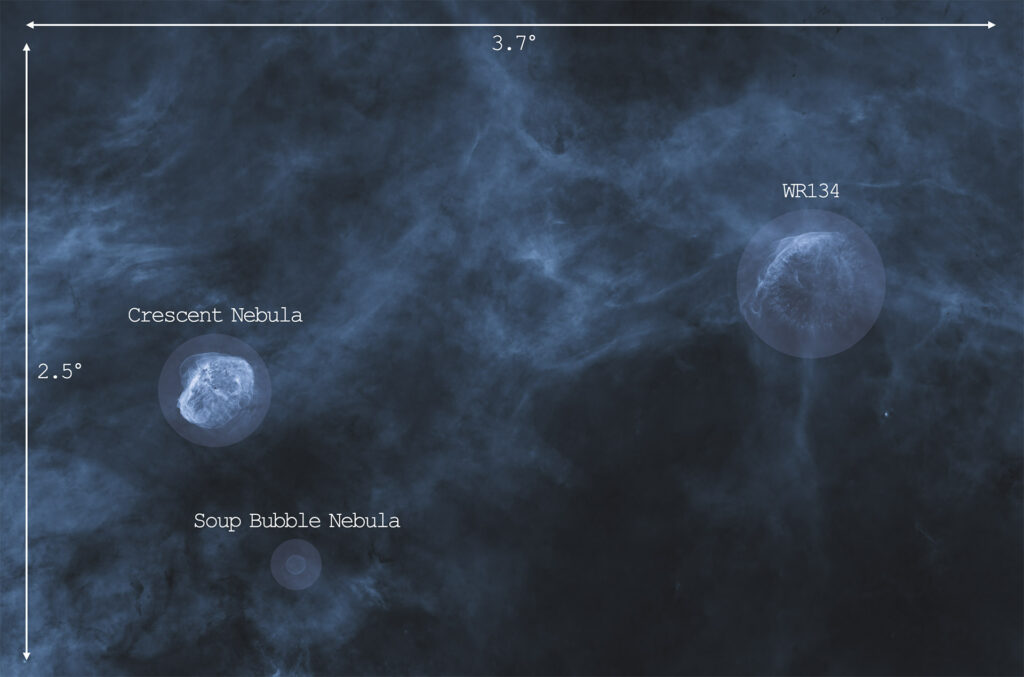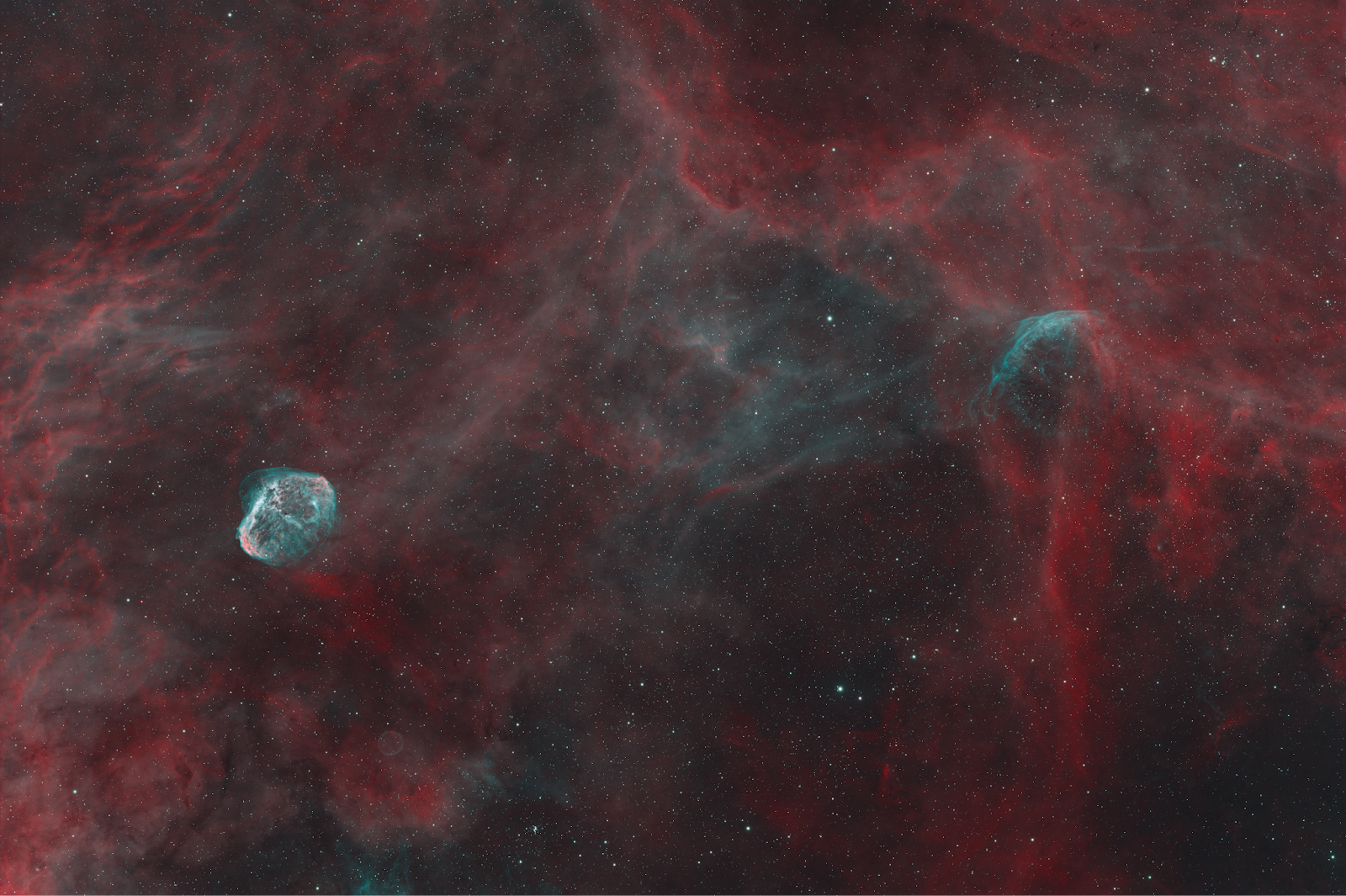By Jett Peters
Today, I would like to present one of the most interesting regions in the night sky, which you can image tonight, and also talk a little bit about the science behind the region and its importance. The region encompassing WR134 and the Crescent Nebula is one of the most photogenic regions in the night sky. Not only are the nebulae contained within the region some of the most eye-catching in their own right, but with a widefield telescope many of them can be imaged in the same frame. Furthermore, the region is brimming with intricate filaments, faint glowing bubbles, and diffuse emission. It has also been the source of a number of new nebula discoveries.

As we’ve discussed in the last blog, WR134 is a prime example of a Wolf-Rayet nebula, distinguished by its unique and striking structure. While WR134 officially refers to the central star, the nebula itself is commonly known by the same name. What makes the WR134 nebula particularly fascinating is that its central star is a variable Wolf-Rayet star, and the nebula itself is remarkably young in cosmic terms, a mere 20,000 to 30,000 years old. To put that into perspective, the Orion Nebula is believed to have formed approximately 2 million years ago. The WR134 nebula truly stands out due to its very intense OIII emission, allowing its eye-like shape to become visible with relatively short exposure times through the OIII filter.
Just a couple of degrees away is the Crescent Nebula, another small yet incredibly-detailed emission nebula. The Crescent Nebula was also sculpted by a Wolf-Rayet star, but this time with a sort of ribcage structure and significantly more hydrogen emission as compared to WR134. The Crescent is also considerably older than WR134, estimated to be between 250,000 and 400,000 years old.
The broader region also produces a multitude of filaments, bubbles, and other features. The Soap Bubble Nebula can be seen below the Crescent and is the quintessential planetary nebula shell. Its official designation is PN G75.5+1.7, and its emission is primarily in OIII, making it stand out vividly against the background. Speaking of the background, between WR134 and the Crescent is wispy hydrogen, sulfur, and oxygen emission. While diffuse clouds of hydrogen and sulfur are common in such regions, the sheer amount of diffuse ionized oxygen is more unique. Ionized oxygen in nebulae is usually concentrated in small, condensed regions around the core, but in this region it forms a substantial portion of the background.

